16 August 1778
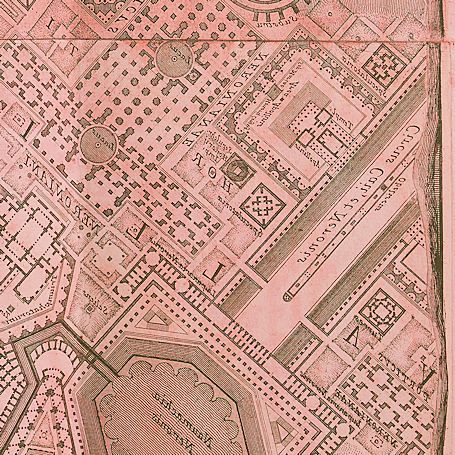 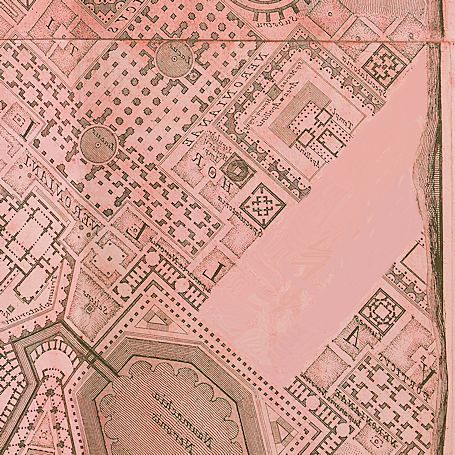
Piranesi is very pleased with Laura's erasure of the Circus of Caligula and Nero plan in the Vatican valley. It's the first circus plan erasure Laura executed fully on her own.
16 August 1977
Vatican Museum was well worth it. Sistine Chapel is hard to relate about. For some reason I never get excited over what I see.
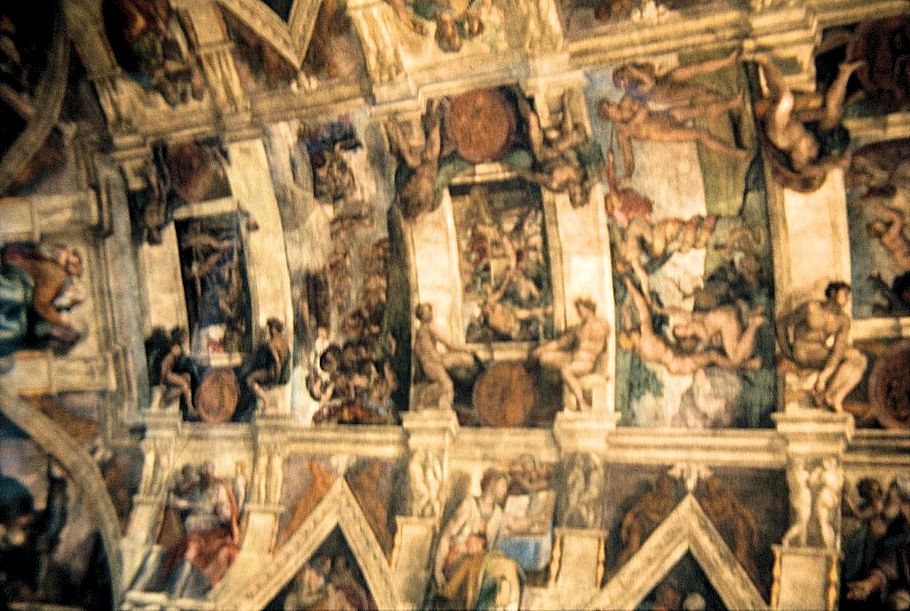
Went to the roof of St. Peter's--view was nice, sketching was horrible.
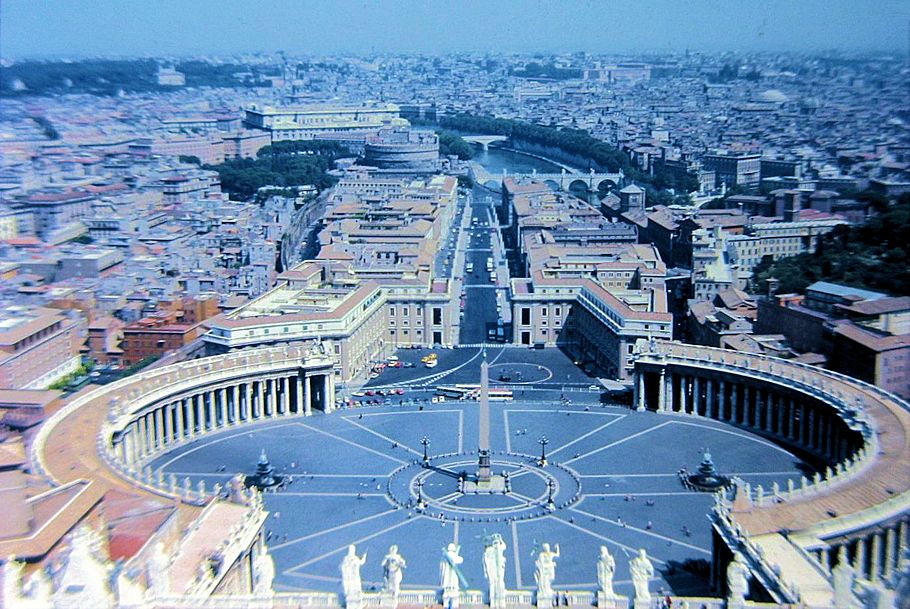

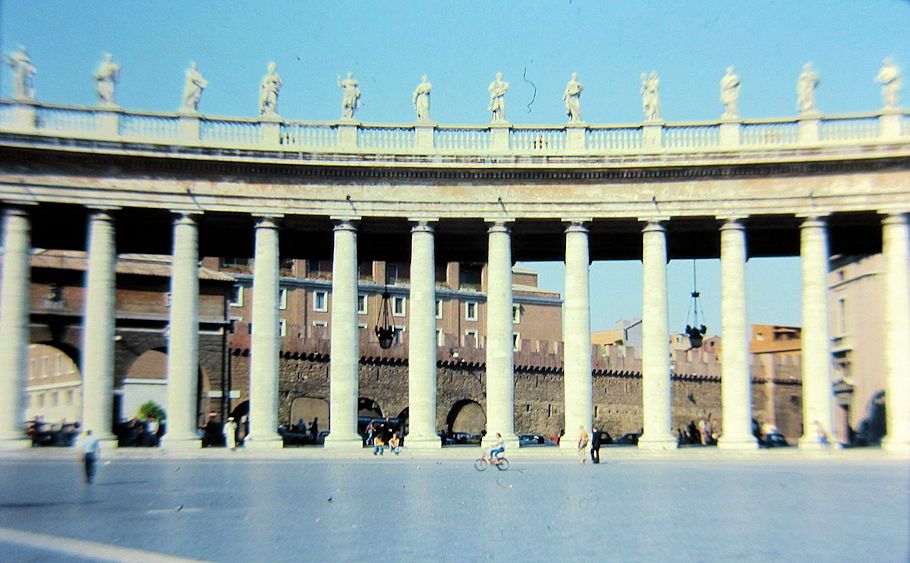
I was the last one to come home in our room.
16 August 1997
part 1a:
The possible title of the section could be: Fathoming the Unfathomable. This could work because that is exactly what it is that I set out to do in beginning to redraw the Campo Marzio.
I wonder if I could here introduce my idea of plans as text. It seems appropriate considering the stuff I'm going to do pertaining to the language and hierarchy of the Campo Marzio plans.
I have to still get the direct quote from Scully concerning the Campo Marzio hanging over Kahn's desk. This is very likely the first time I became aware of the existence of Piranesi's Campo Marzio, and it worth noting that this first introduction also brought with it an architectural legacy--a sense that it may hold some special inspirational power, and therefore a sense of mystery as well.
Get the Frampton quote from the notes to Exhibit I.
I do not now have the Kahn book in front of me, but I want to still make a list (of 5 or 6 items) of Kahn building plans that seem very inspired by the Campo Marzio plans.
Here is a list of MG building plans that also seem very inspired by the Campo Marzio:
a. Elementary School, Aviano, Italy, 1981.
b. William Penn High School, Philadelphia, 1975.
c. Mission Park Residential Houses, Williamstown, MA, 1972.
d. Parliament House Australia, Canberra, 1988.
e. William Jeanes Memorial Library, Whitemarsh, PA, 1967.
(Seeing the M/G plans in relation to the Campo Marzio also makes me aware of the subtle historical transformations that Giurgola also interjected into his designs. Specifically, I am speaking of the influence of Stirling and Aalto as likewise part of the overall design process.)
Right now I am thinking of either just sketching and scanning these plans, or perhaps I use the computer to do schematic plans. In any case, I don't think I will be inputting the whole plan.
The point here will be to present the story behind my own architectural education (early exposure) and the notion that all these plans have a repeated pattern and an intricate planimetric geometry, a geometry related to the plan formations of the Campo Marzio.
I could also introduce my own Bank plan from 2nd year studio as an example of my own venture into geometry. I was more or less searching for a creative geometry that was also meaningful.
I can also discuss patterning and the other capabilities of CAD. I could show examples of the various copy and rotate techniques of CAD.
Ultimately it was capabilities of CAD (unlimited drawing plane, drawing individual plans and then positioning them into context, copy mirror, copy grid, circular copy) that manifested the possibility to redraw the Campo Marzio, thus making an unfathomable task fathomable.
I will end by illustrating the first set of plans that I generated, and explain how they represent plans made up of repeatable generative elements, thus also representing a specific type of design methodology. (see general note 124.1)
part 1b:
See general note 116.
I can use all the following illustrations and references:
1. campobase.db as following in Fasolo's footsteps (?)
2. the years of dormancy (?)
3.Tafuri and the Horti Lucilliani - source of inspiration and information - textual references.
4. new plan beginning to take shape.
5. started making scale comparisons - between CC Philadelphia and the Campo Marzio which culminated within Exhibit I.
6. reaching a critical mass with the Bustum Hadriani and the Horti Neroniani.
7. reaching Piranesian proportions (of output) - also the manifestation of a new form of architectural documentation (and documentation here refers to his vast book output as well as to his tromp l'oui (sic) technique of representation).
8. Is Piranesi still my guide in this project? - the answer is yes because it is through Piranesi that I continue to learn about the virtual realm.
All of the above will be revealed as a real demonstration of the Collingwood's philosophy of history. (Although I should make it clear that my personal knowledge of Collingwood came very late in the process.)
I have to scan in the specific Collingwood texts that apply.
I can perhaps end this section by addressing the question of whether I have in the process been able to reach the same imaginative level of design ingenuity as Piranesi? I guess the real answer to that question is that I have mostly learned thing that I in no way expected. It is almost as if the original quest for an understanding of creative and meaningful geometry as it relates to architectural design is no longer the issue. The real issue now seems to be the discovery of the real capabilities of the virtual realm, and how the virtual realm may be opening a new alternative direction of historiography. This is perhaps the best lead into the next section which will address Piranesi's own re-enactment of history and how his process relates to the philosophy of Vico.
part 1c:
(8.20.97) These notes now seem to not exactly relate to the main point, which is the relation of Piranesi's reconstruction of the Campo Marzio and the philosophy of Vico. Most of my references will come from Vico and texts on Vico (Vico and the imagination). Here are the notes:
1. I could make a comparison between the Nolli plan and the Forma Urbis and then make the connection that the Campo Marzio is like a combination of the methodology behind the two (prior) plans.
2. I'm still not sure, however, where the notion of re-enactment fits in. (I wonder if I get the Yourceau book out and read it--maybe there will be some reenactment ideas there.
3. I might make a case here distinguishing reenactment from archeology.
4. I may have to also do as much other Piranesi reading as I can in order to make a reenactment case.
5. I might end this section with an introduction of the notion of imagination. Was Piranesi trying to recapture the ancient Roman imagination? Where the extent ruins his primary link to Rome's architectural past? Was Piranesi essentially looking at the ruins and then imaginatively filling in the gaps? Dixon addresses this very point.
I have to scan the appropriate texts from Cecilia Miller, Giambattista Vico: Imagination and Historical Knowledge. I should also re-read Sue Dixon's dissertation. Of course, I will also make reference to Sue's "Methods of Reconstruction".
part 1d:
There are more or less equal pros and cons relating to the question of historical accuracy. Perhaps I begin with the (most famous) quote from the Campo Marzio text (compare the two translations I have in both Tafuri and Wilton-Ely).
Perhaps I ask Sue what she knows about the Via Flamina and its odd placement in the Campo Marzio. Fasolo refers to the placement of the Via Flaminia as arbitrary. This then also brings into question the positioning of the Equiria, (which here Fasolo wrongly identified as a waterway) and how the Via Flaminia today is actually the route inscribed by the Equiria of the Campo Marzio, and how the present day Corso, whose name refers to the ancient race course (I actually still have to verify this) is not depicted within Piranesi's Campo Marzio but the "arbitrary" Via Flaminia seems to take its place as the "main street" of the reconstruction.
Make a big case about the Vatican Circus. Find out when the Circus was discovered and whether it was discovered around the time when the Campo Marzio was being drawn. The question seems to be why did Piranesi include the circus seemingly after he had already "reconstructed" that area of the Campo Marzio without it. There is some historical reference to the circus in the Perspecta article about the site of St. Peter's.
I will note the actual locations in the Campo Marzio where Piranesi actually did excavating in the Campo Marzio--this info is available in the new Forma Urbis.
There is also the connection between the big scoop on the Tiber (depicted on the Nolli plan) and the Natatio (beach) at the same location in the Campo Marzio.
I could end this section with a comparison between the Minerva Medici and the Horti Luciliani. Piranesi may be very loose with what he put where and what specific buildings look like, but he is very consistent in terms of finding his inspiration in actual Roman buildings.
part 1e:
Perhaps without going into chronosomatics specifically, I can still make my case here by referring to the following issues:
1. the long span in time with which Roman forms have been alive. I first make note of all the various types of Roman designs made during the Empire. This will be followed by addressing the offshoot of early Christian and Byzantine Architecture (and perhaps even Islamic architecture?), and this is then followed by the Renaissance, Neo-Classicism, and the Beaux-Arts.
2. I can discuss Piranesi's own ideas of Roman supremacy over the Greeks.
3. I can argue that both Greek and Roman architecture has proven itself to be abundantly fertile.
4. I wonder if I can even make the point that Roman architecture played a part in European colonial architecture, e.g., Lutyen's New Dehli.
part 1f:
I may indeed begin my analysis of the Campo Marzio as fertilized architecture with the Porticus Neroniani. The plan itself is like the proverbial missing link because it has both the traditional and the new geometric state all in one design. I can also bring up the solid/void issue which will lead directly to the intercourse building in terms of inside/outside, figure ground, penis/vagina, male/female.
The rest of my thesis here is already well documented in terms of the hierarchy of plans, except I really still have to collect the actual plan drawings that I believe to exemplify/illustrate my theory.
Besides all the Tafuri references in Architecture and Utopia, there are more references to fecundity in Tafuri II, Wilton-Ely, and Fasolo.
Did Piranesi's own imagination itself reach a new "fertilized" state--a state where creative manifestation began to occur exponentially rather that merely linearly?
I should also look up genetics in the dictionary and EB.
genetic 1 a : relating to or determined by the origin, development, prior history, or causal antecedents of some phenomenon : CAUSAL, HISTORICAL, EVOLUTIONARY b : based on or determined by evolution from a common source -- used esp. of relations among languages or among words and grammatical forms of languages c : concerned with or seeking to explain, interpret, or understand (as a literary or psychological phenomenon) in terms of its origin and development or of its causal antecedents 2 : of or relating to genetics : characterized or produced by processes of genetics
genetic 1 a : a branch of biology that deals with the heredity and variation or organisms and with the mechanisms by which these are effected 3 : GENESIS
part 1g:
If I do incorporate the theory of chronosomatics in this book, (and I could mention it in an introduction and include the theory as a selected text or addendum), then this section can address all the aspects of Piranesi's imagination and make the case that he is operating in all the ways that it is possible for him to do according to the "slice of body/time" within which he exists.
This section will probably function best as an all inclusive capsulating essay of all the various ways that Piranesi's imagination appears to be operating. This section actually has the potential to be heavy and deep, but I will try to keep it as simple as possible by being very direct with the correlations that are able to be made.
part 1h:
I think I will be able to find a number of references that refer to Piranesi's Campo Marzio virtually. Not only is the Campo Marzio an ancient Rome that both is and is not, it is also a disfigured "reflection" of the late Baroque Rome of Piranesi's own time.
See general note 118 - virtuality as a new fork in the road of historiography.
I will also address Fasolo's question of whether Piranesi wanted to be a "real" architect. I can now ask whether Piranesi is actually the world's premier virtual architect?
16 August 2022
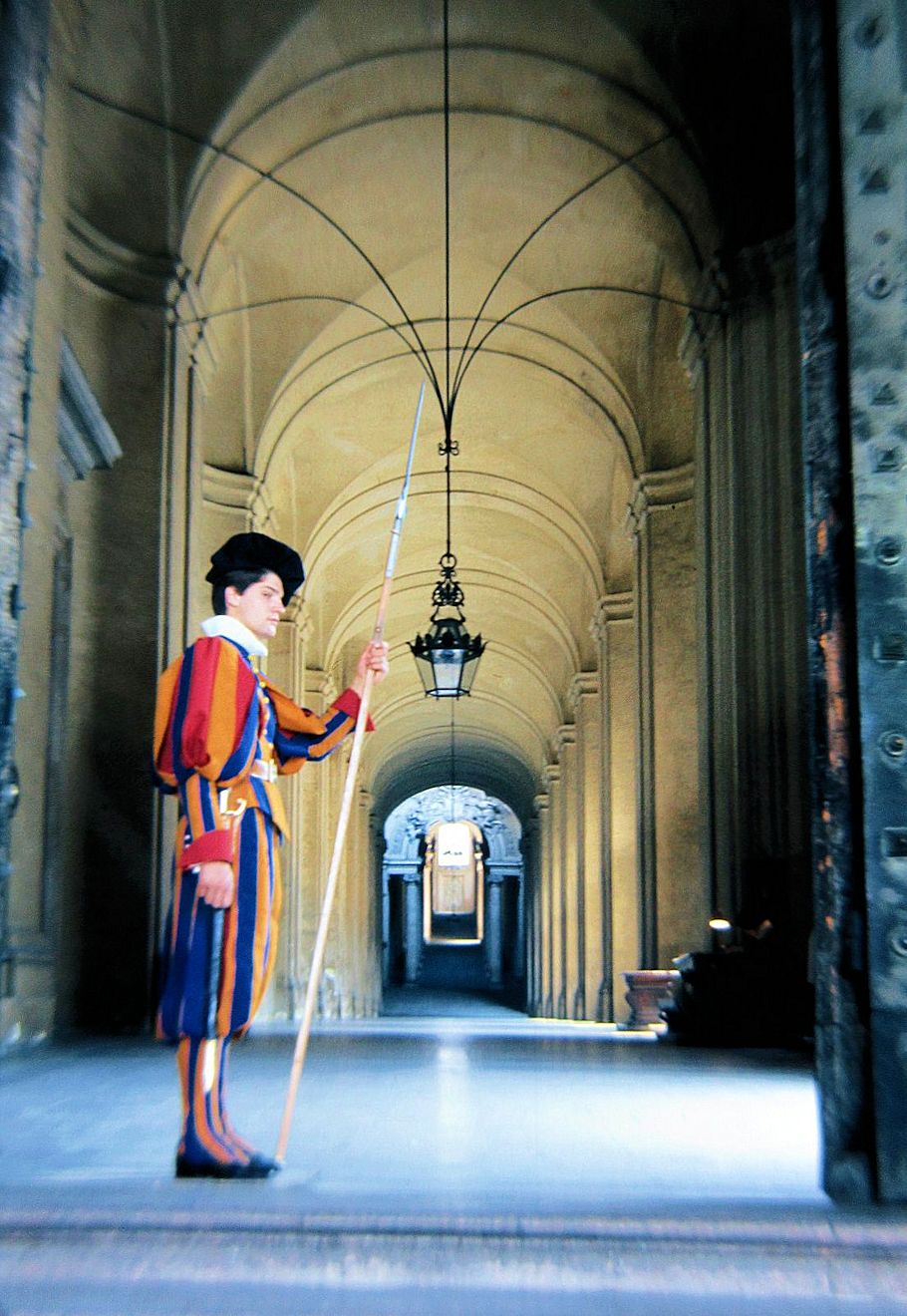
There's that open door at the end of St. Peter's Colonnade which opens up to a long corridor and ultimately the Scala Regia. As usual, a Swiss Guard was there standing at attention. I walked up the few steps anyway. The guard remained motionless until I reached the threshold, when he very subtly dipped that spear/ax thing about a quarter inch in my direction. Then I winked at him and returned back to the crowd.
|